What To Put Under an Above Ground Pool on Grass? 6 Suitable Options
-
- Last updated:
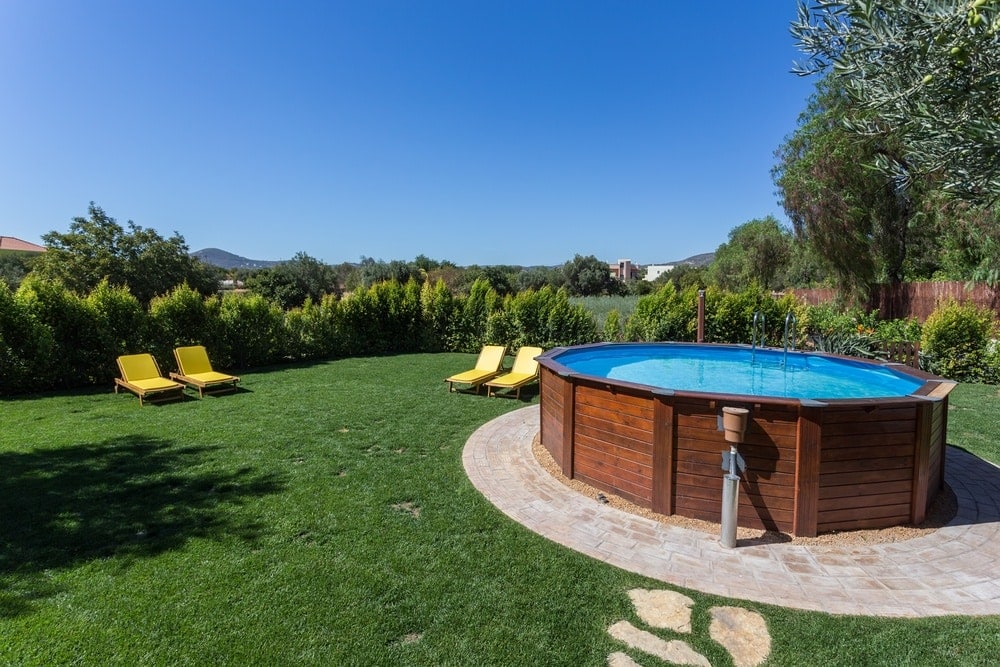

Congratulations! You have decided to buy an above ground pool for your backyard. Now comes the fun part: installing it. While you could place your pool directly on top of your grass, that isn’t the best idea. The grass isn’t a firm base since it is alive and growing. Your pool can shift over time and settle into an unfavorable and potentially dangerous position. Meanwhile, some hardier types of grass are strong enough to grow through the liner of the pool.
Having a stable base under your pool is vital. You have chosen your spot, removed all the grass, and leveled the ground where you want your pool to sit. Now, what do you put down next to ensure a stable and comfortable base?
Let’s go over the advantages and disadvantages of several options, as well as some general tips for installing them. The most common materials to use as a base for above ground pools include concrete pads, commercial pads, sand, solid foam, carpet padding, and flooring underlayment.

The 6 Things You Can Put Under Your Pool
1. Concrete Pads
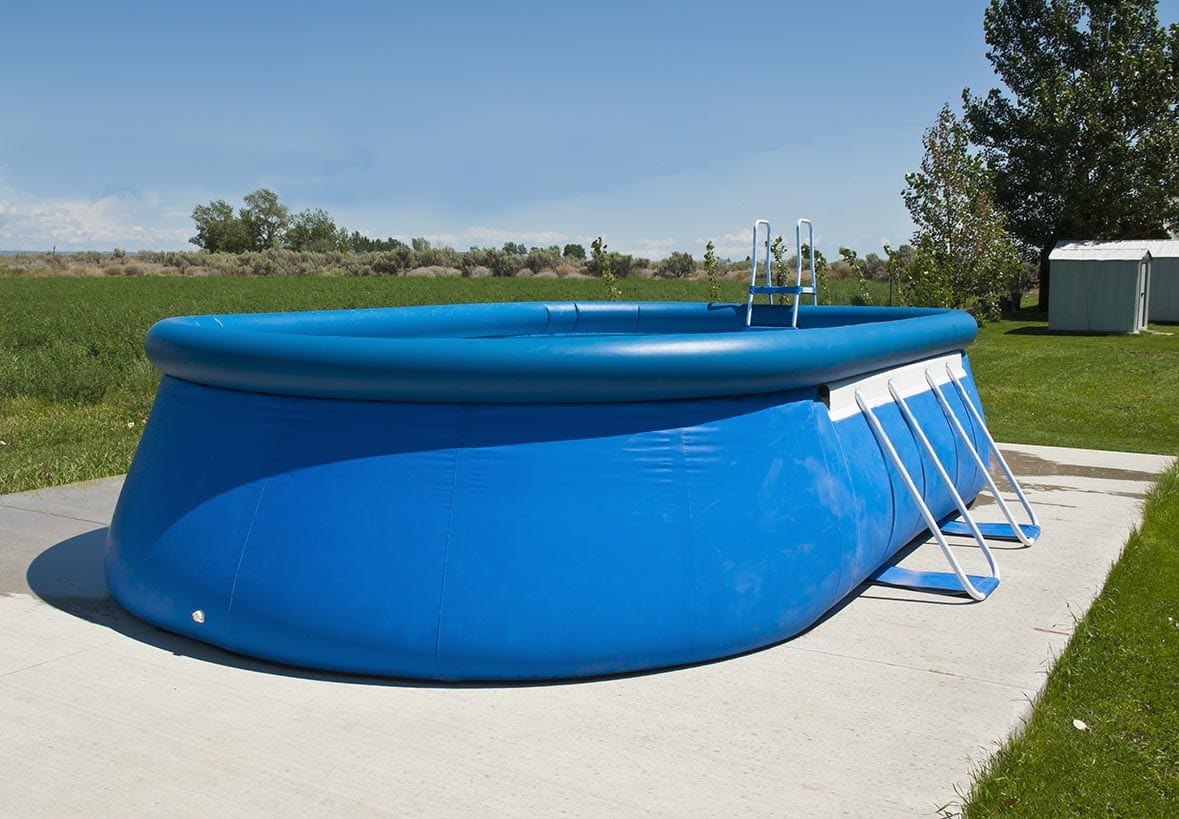
Concrete pads are excellent to use as a base for your above ground pool, but you’ll want to add another cushion between the two. Concrete is an abrasive material and will wear on the liner if it’s in direct contact.
Concrete is the best choice for a solid base because it is perfectly flat. It’s also very stable and won’t allow your pool to shift over time.
- Excellent base
- Perfectly flat
- Won’t allow the pool to shift
- Abrasive
- Will wear liner over time
- Requires another padding
- Mark an area one foot larger in diameter than your pool
- Remove all grass and other debris
- Add any fill needed to ensure a smooth surface
- Treat the area with a weed killer to get rid of any aggressive grasses that may grow
- Raise the area that your pool will sit on slightly above the natural ground line, to allow drainage away from the pool
- Once you lay your pool, fill the extra one foot of space with pea gravel or other landscaping material
- Pull any weeds that start to grow in the extra space
2. Commercial Pads
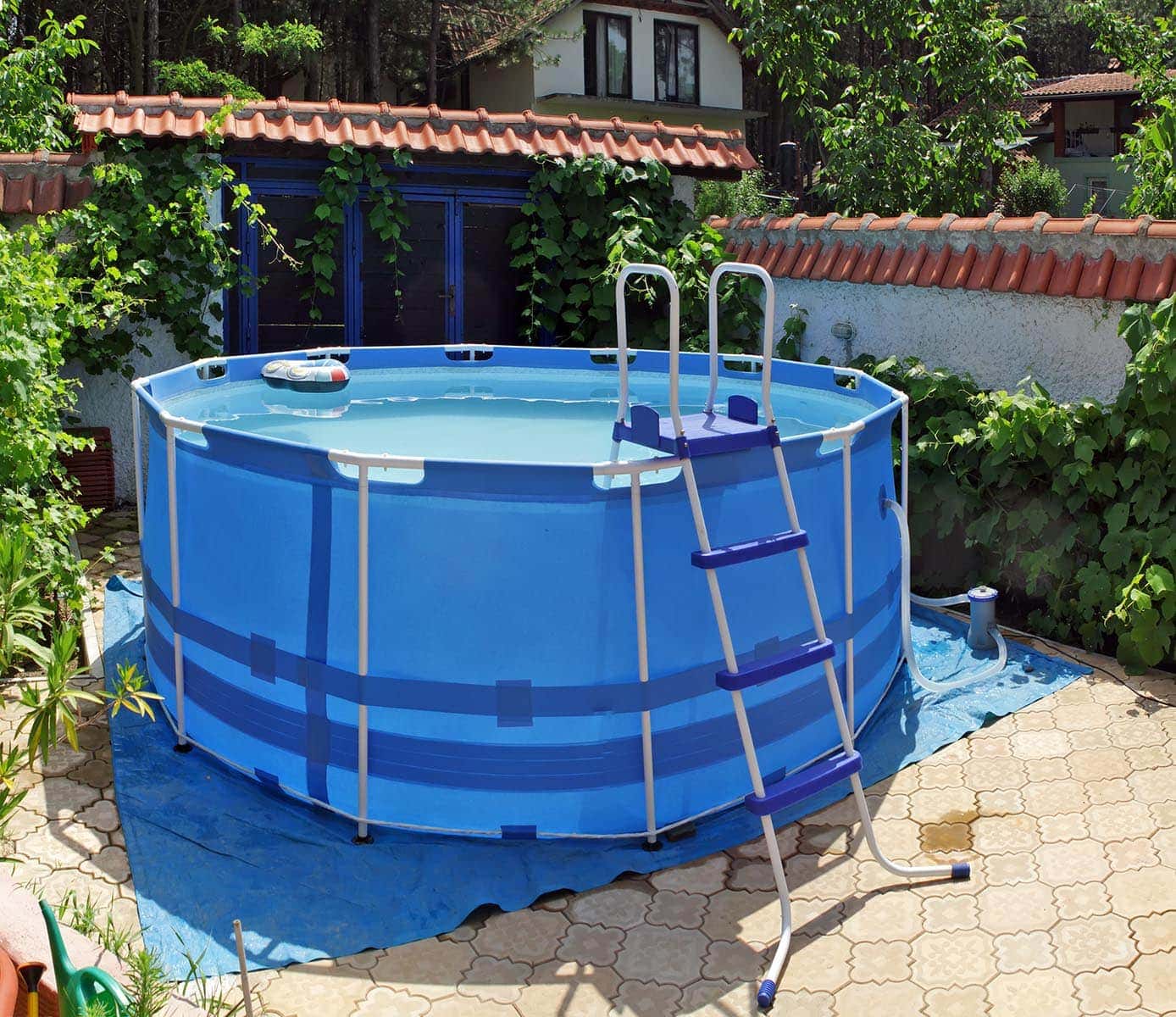
Commercial pads are an excellent choice for padding to lay on top of your concrete. You can purchase precut ones for most standard sizes. If they don’t have your size, you can cut it to the exact measurements that you need yourself. You can use the walls of the pool as a guide, showing you where to cut.
Commercial pads are extremely tough materials, so they can stand up to the different elements of Mother Nature. They are breathable, so they don’t allow moisture to get trapped under your pool. However, this is one of the most expensive options available.
- Can be cut to the exact measurements of your pool
- Some standard sizes come precut
- Breathable
- Tough material
- Pricey
- Not very thick, so lay two layers
- Cut to size using pool walls as a guide before installing
- Before installation, make sure to remove all debris and sharp objects
3. Sand
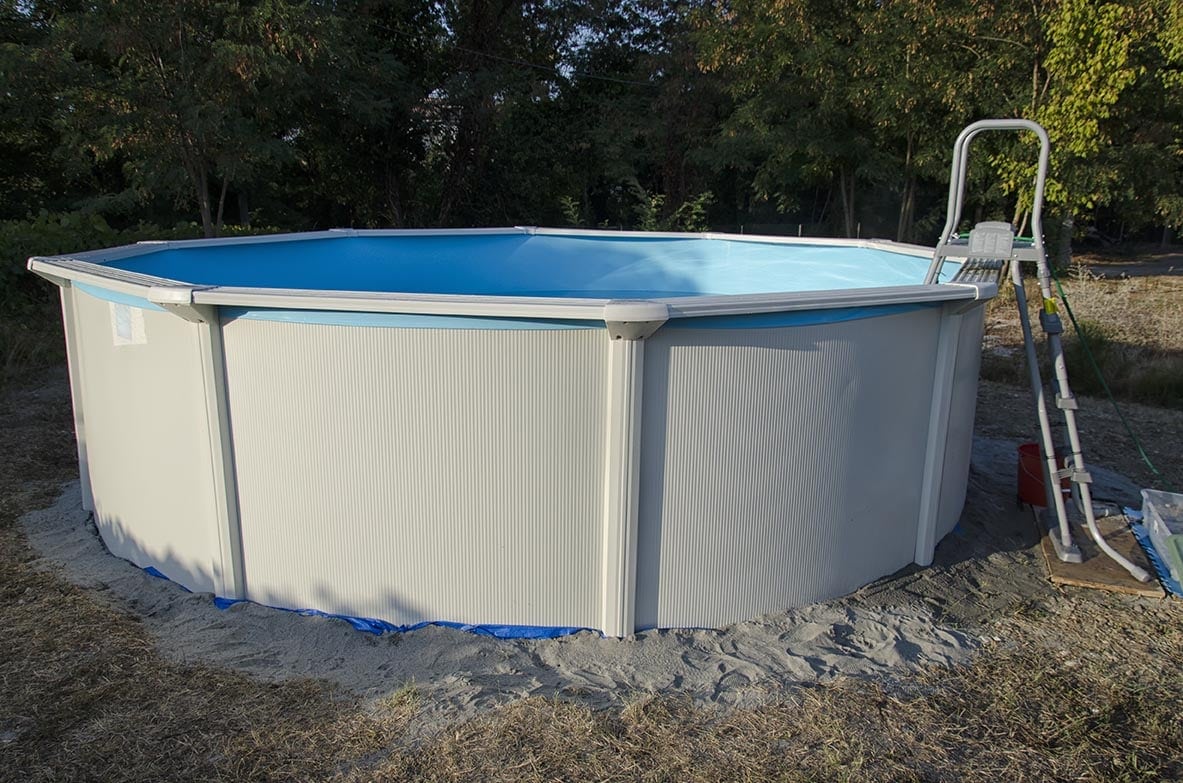
Many people like to use sand as the base for their above ground swimming pools because it is inexpensive and easy to lay. It isn’t the best option, though.
Sand can’t be used with concrete. The problem is stability. Concrete is in solid slabs that don’t move. Sand is tiny particles that can shift around, shifting your pool with it.
There are also many insects that like to burrow in the sand. This burrowing will create tunnels under the pool and cause soft spots.
- Affordable
- Easy to install
- Cannot be used with concrete base
- May wash out from under the pool, allowing it to shift
- Insects can make tunnels underneath the pool
- Remove all sharp objects and other debris from the area
- Make top surface a little higher than the average ground level
- Fill any low spots to make sure it’s level
- Rake smooth before installing
4. Solid Foam
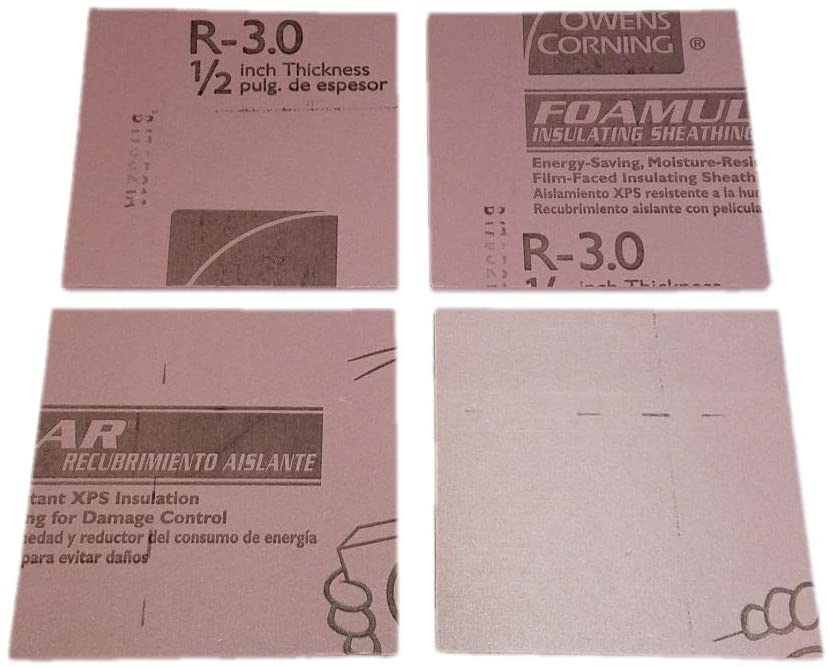
Placing solid foam on your concrete can be a suitable choice, but it can get pricey.
Many people like foam because it’s available in a large variety of thicknesses. Being able to use one thick layer is preferable over many thin layers of another material. It also won’t slide around on abrasive concrete.
When laying a pool pad, it is best to cut the correct size and shape before you lay it down. Foam can be challenging to get cut down to size. The thicker it is, the harder it is to conform to shape and cut through.
- Comes in variety of thicknesses
- Thick layers work excellently
- Won’t move around on concrete
- Challenging to cut to size
- Can be pricey
- Make sure it’s rated for outdoor use
- Use pool walls as a guide to cut to the exact shape and size needed
- Install padding directly on concrete inside the pool walls
- Place liner on top of the foam
5. Carpet Padding
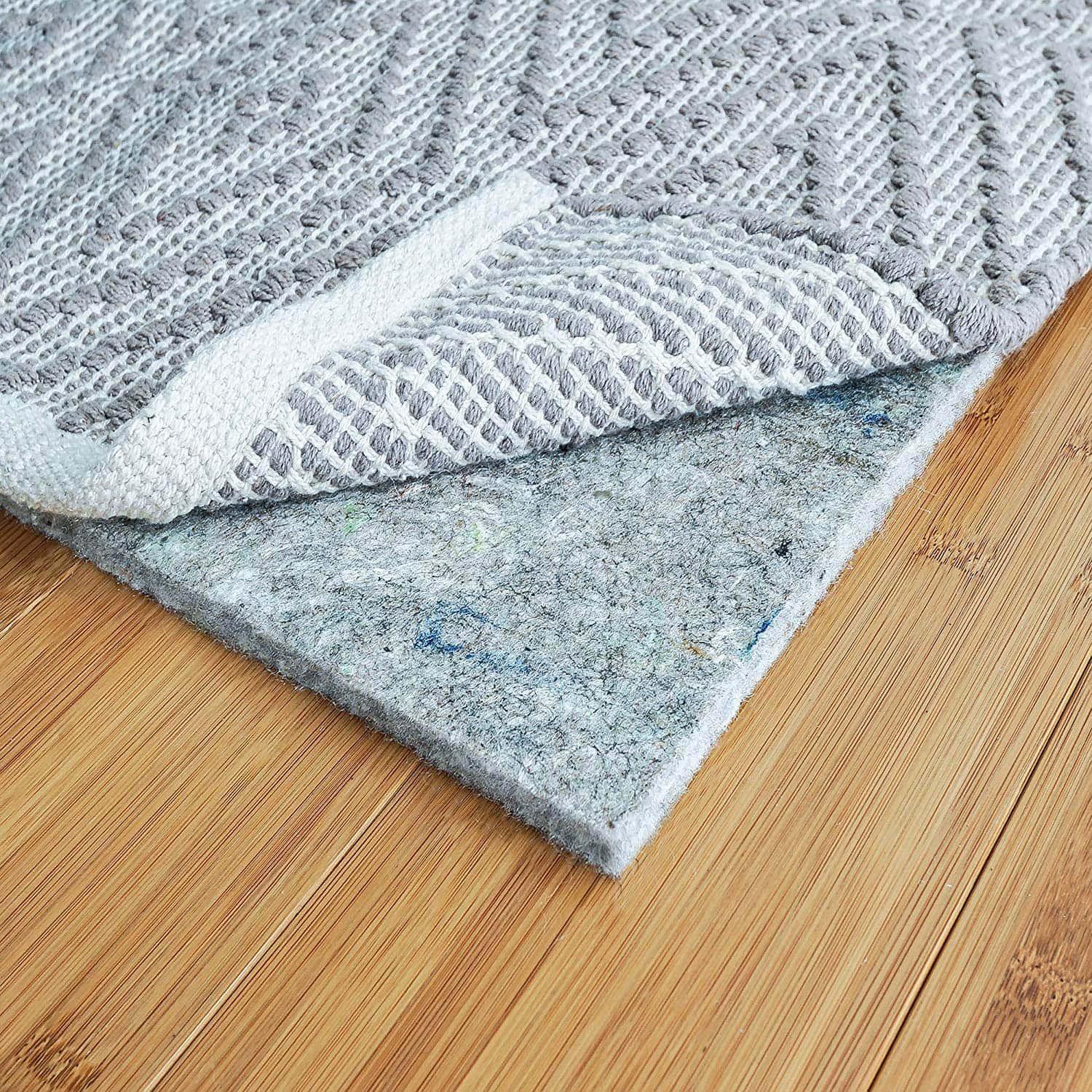
Many people like to use carpet padding because it’s easy on the pocketbook, they know how to use it, and it is available everywhere. Carpet padding isn’t typically very thick, though. You’ll need to lay at least two layers of it, more if you like a softer cushion.
- Economical
- High availability
- Doesn’t give as much cushion
- May require more than one layer
- Use dense foam rather than felt fiber or rubber
- Use a “memory foam”
- Use pool walls to cut to size before installing
6. Flooring Underlayment
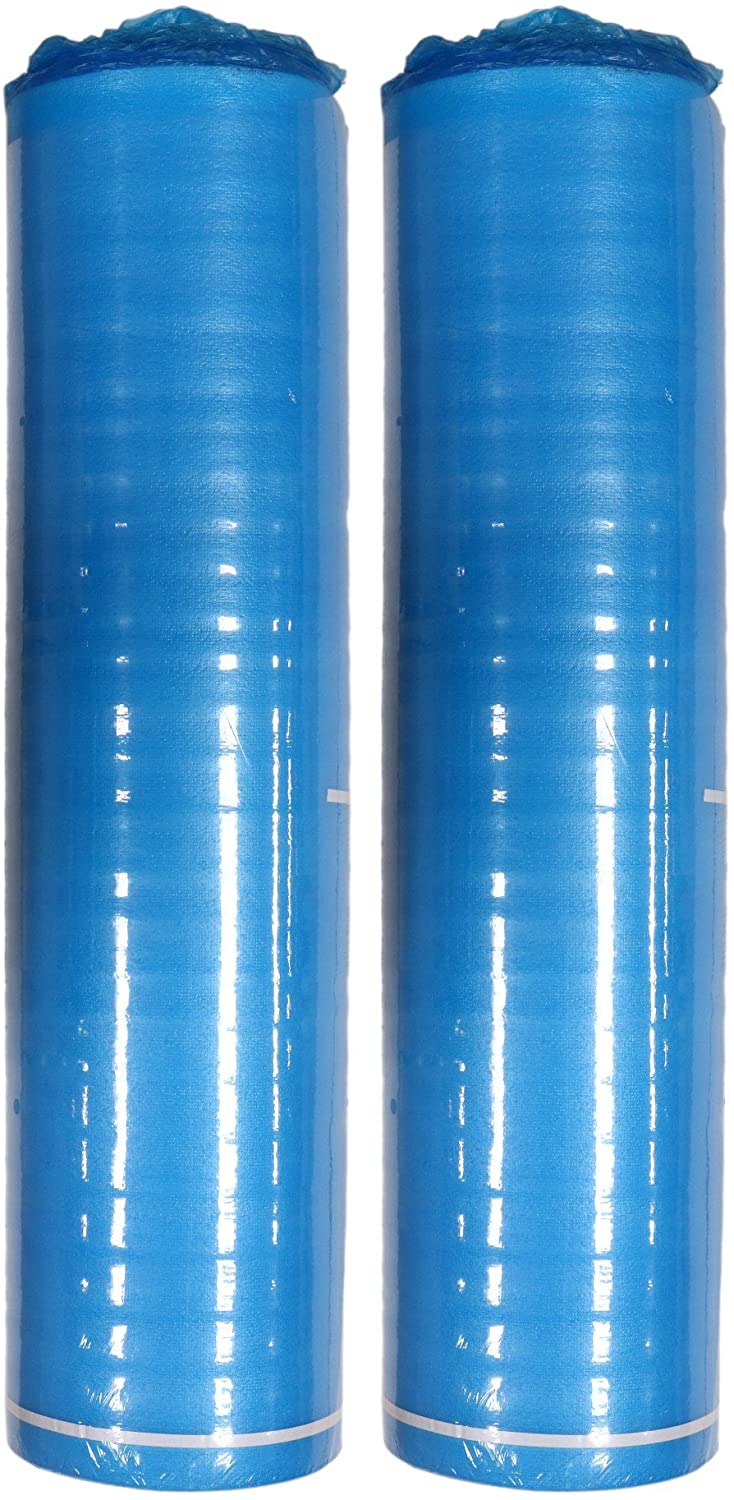
Flooring underlayment is one of the most economical materials you can lay on concrete to shield your liner from the abrasive surface. It’s very thin, though, and offers the least amount of cushion of all the options. To get a softer surface, you’ll need to put down several layers.
- Inexpensive
- Shields liner from abrasive concrete
- Minimal cushion
- Cut to size using the pool walls as your guide before laying
- Must use multiple layers to get any cushion

Conclusion
You want to have a stable base for your pool that won’t shift around and concrete is your best bet. It lays perfectly flat and is typically one piece that is too heavy to move around. The surface is abrasive, though, so you will need another padding to layer in between it and your pool liner.
Several different materials are available for padding. They’re all excellent choices, so you can’t go wrong. It comes down to your preference. How many layers do you want to lay? Is it essential that cutting it into shape is easy to do? How much do you want to spend? The choice is yours — best of luck and congratulations on your decision.
- You might also like: 10 Must-Have Accessories For Your Above Ground Pool
Featured Image Credit: Sergio Sergo, Shutterstock
Contents

